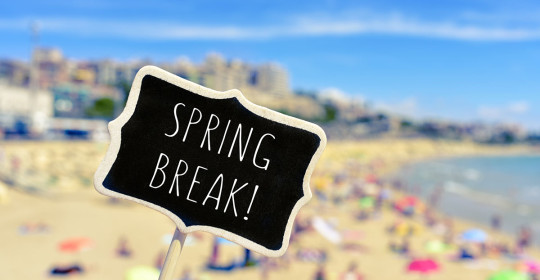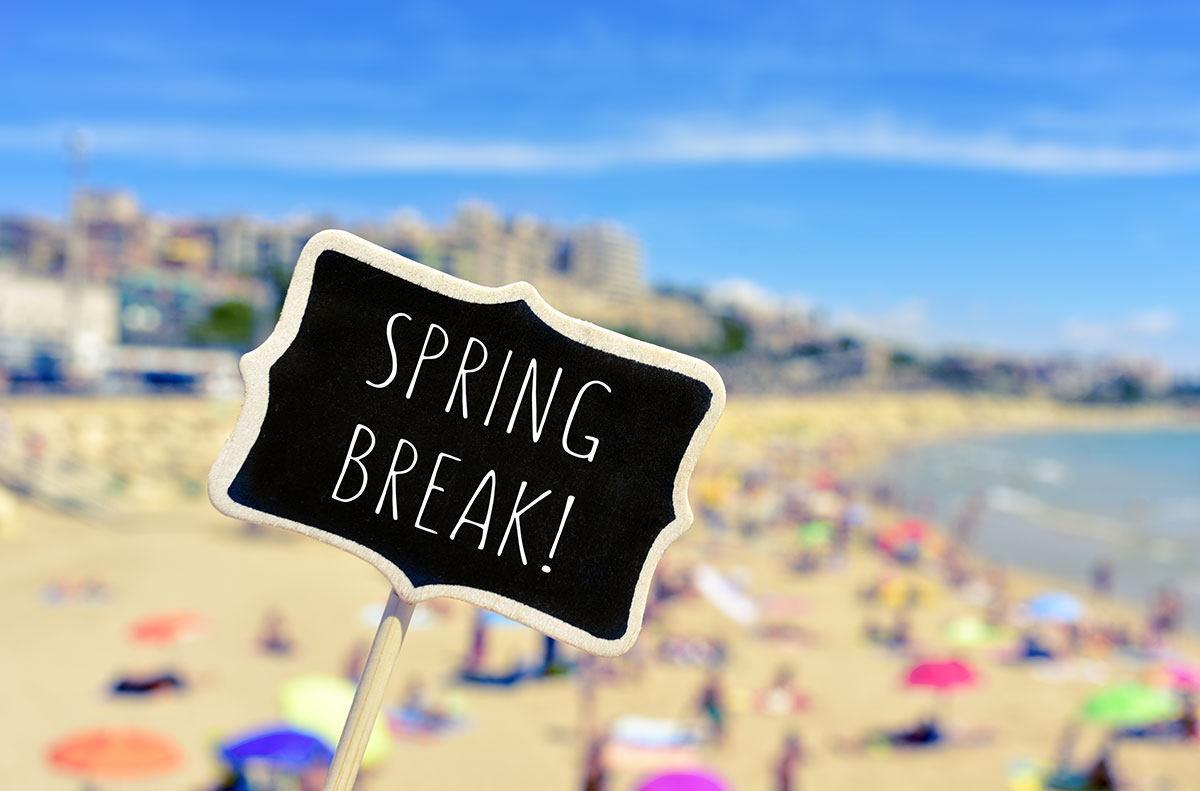
Spring Break Safety Tips

Be Safe in the Sun
You may be tempted to “pre-tan” and then tan some more once you arrive. But don’t. Any increase in skin pigment (called “melanin”) is a sign of damage. Ultraviolet radiation from the sun can cause wrinkles and dark spots among other problems—and tanning puts you at higher risk for skin cancer. But the beach can still be a high point of your trip.
- Protective clothing. Wear a hat and protective clothing, and stay in the shade.
- Sunscreens. Wear a broad spectrum sunscreen that protects against UVA and UVB rays, and choose an SPF of 15 or higher. You need at least one ounce of sunscreen lotion (the size of a golf ball) to cover your body. Reapply at least every 2 hours, or every 40 to 80 minutes when swimming or sweating, according to the directions on the product label. And limit the time your skin is exposed to the sun between 10 a.m. and 2 p.m.
- Tanning beds. The lamps in the beds emit ultraviolet radiation that can be more intense and harmful than the sun. FDA recommends carefully reading the instructions and warnings before using these beds, and tanning pills and accelerators are not approved by the agency.
- Spray tans and bronzers. Know that spray-on tanning or bronzing products are not UV protective.
Use Medications Wisely
Prepare for your trip by asking your health care professional any questions, including those about side effects and interactions, before you go. Then follow his or her directions. Don’t skip doses, don’t share medication, and don’t take more than the suggested dose. Also check expiration dates in advance and keep your medicine with you when traveling. (If you’re flying, you don’t want to land in Cancun and have your prescriptions land in Cleveland.) Finally, keep a detailed list of what you’re taking. Ideally your travels will be smooth. But if you need to seek medical care this list will be helpful.
Be Careful With Contact Lenses
They’re convenient but can expose you to serious conditions such as eye infections and corneal ulcers—something you don’t want to deal with on vacation. To avoid problems, first make sure your contacts are prescribed by an eye care professional. Skip colored or decorative lenses sold in beauty supply stores and at the boardwalk, since they can damage your eyes. Second, wash your hands before touching lenses, and use sterile solution. Never expose your lenses to saliva or non-sterile water, including that from the tap, bottle or ocean. Non-sterile water can put you at risk for an eye infection. So remove your contacts before swimming or getting in the hot tub and follow your eye care professional’s other care and removal instructions. If your vision changes, your eyes get red, you have lots of tears, or your eyes hurt or feel itchy, take out your lenses and seek medical attention.
Think Twice About Getting Tattoos or Henna
Whether you’re considering a non-permanent (e.g., henna) or a permanent addition (including makeup), think before you ink. Tattoos can cause allergic reactions and put you at risk for infections like HIV or hepatitis from unclean tools, practices or products. FDA has not approved any inks for injecting into your skin and does not regulate tattoo parlors. FDA also hasn’t approved henna or hair dye for skin use, and some people have reported serious problems after using henna, including allergic reactions such as rashes and scarring.
Stay Hydrated and Remember Tips for Healthy Eating
Time flies when you’re having fun, but take a few moments to sip H2O throughout the day. “When you’re traveling, it’s easy to become dehydrated because sometimes you don’t have access to water,” explains Shirley R. Blakely, Ph.D., R.D., a senior nutrition advisor with FDA. So when you spend a late afternoon at the beach (remember sun safety!) bring water and drink even before you feel thirsty, she advises. Also beware of ice or tap water in places where water isn’t safe to drink. If you don’t have access to safe water, Blakely recommends drinking an internationally known brand of a sugar- and caffeine-free carbonated beverage. Finally, Blakely says, “When traveling, you may find yourself overindulging.” For healthy eating, Blakely recommends following the dietary guidelines by making half your plate fruits and vegetables, and half your grains whole, to get enough fiber and other essential nutrients. “And if you’re faced with a smorgasbord, build your plate with fruits, vegetables and whole grains first, then add the protein source.”
More Information
- CDC: Travel – Stay Healthy and Safe on Spring Break
- Fight Back on Spring Break: Safety Tip Sheet


Most Commented